Submitted by WA Contents
Dutch Pavilion interrogates the future of labor ethos at the Venice Architecture Biennale
Italy Architecture News - May 29, 2018 - 06:54 20068 views
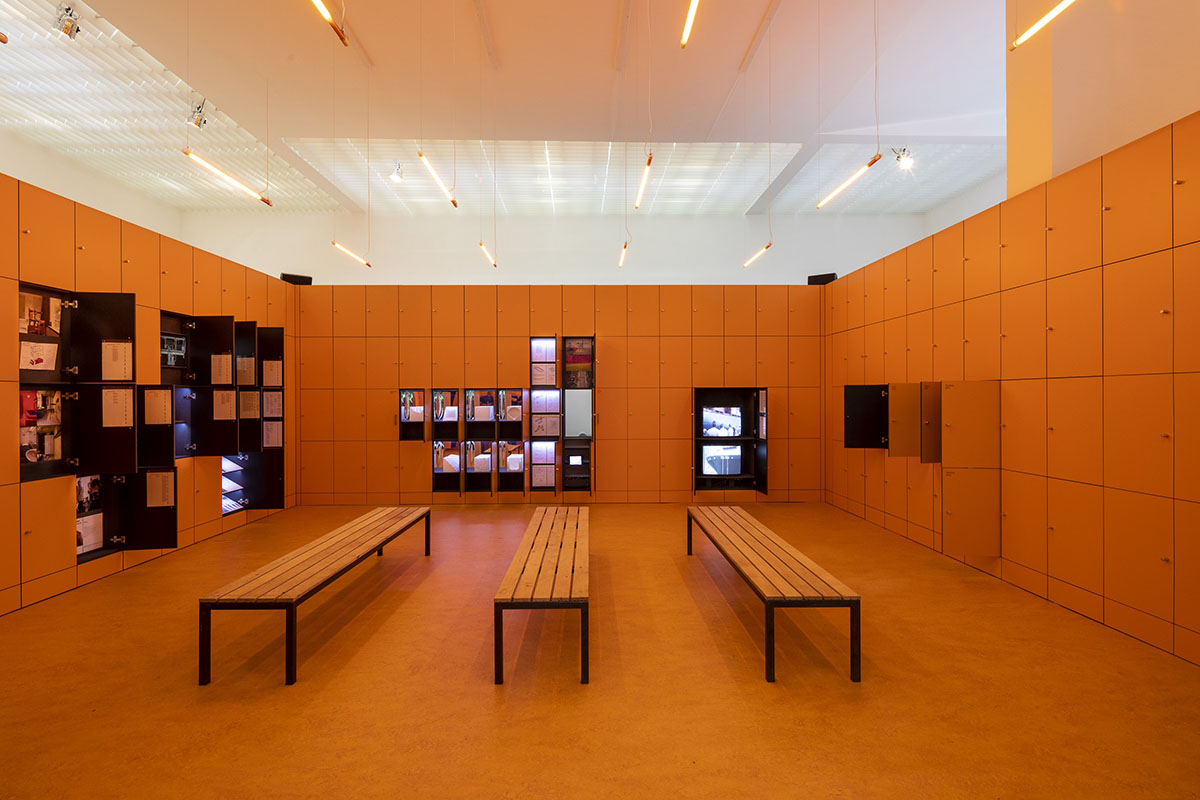
A bold orange-coloured room welcomes visitors to watch different modes of our living conditions and the notions of human body that encountered in various spatial configurations, which is the strong concept of the Dutch Pavilion at this year's Venice Architecture Biennale.
Titled Work, Body, Leisure, the exhibition space is opened up with different sections to explore various modes of living and notions of the human body engendered by disruptive changes in labor ethos and conditions.

Visitors first see the lockers at the entrance of the Pavilion. The locker is described as "an interface between the laboring and the non-laboring self, if any distinction between the two remains today."
The lockers in the exhibition chart a journey through a series of architectures in the Netherlands and beyond in which bodies are categorized and transformed: offices, playgrounds, farms, factories and virtual spaces, windows, beds, and doors.

The room, called Safety Measures, was designed by Simone C. Niquille and to address to the worker conditions and safety measures, many colourful worker dolls are showcased on a chequerboard bed. The room shows that how digital avatars are used to measure safety for workers.
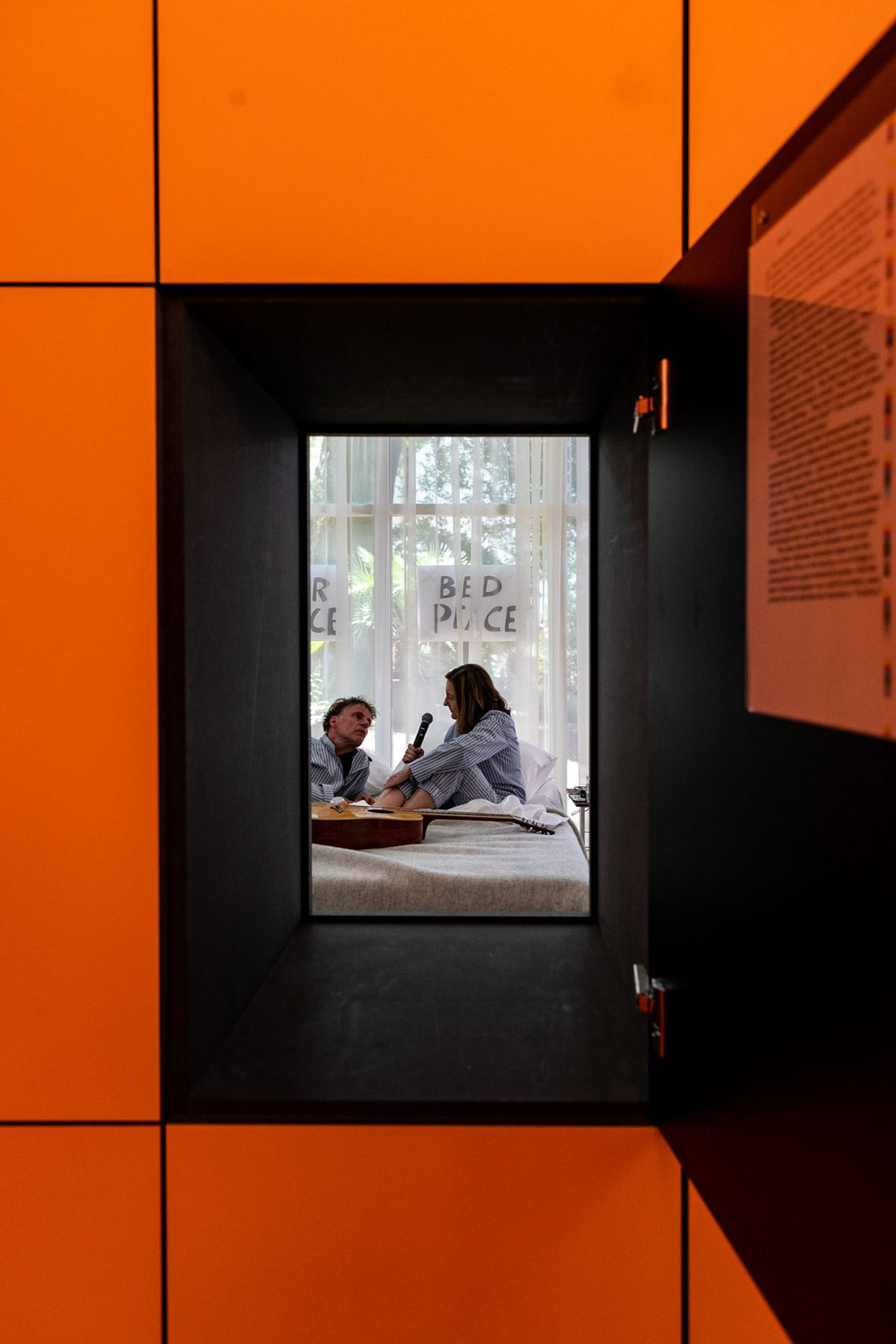
Commissioned by Het Nieuwe Instituut and curated by Marina Otero Verzier, the project houses contributions by a group of architects, artists, designers, historians, musicians and theorists, including Beatriz Colomina, Mark Wigley, Liam Young, Amal Alhaag and Jane Chew and Matthew Stewart and more, selected by the curatorial team and through a number of open calls.
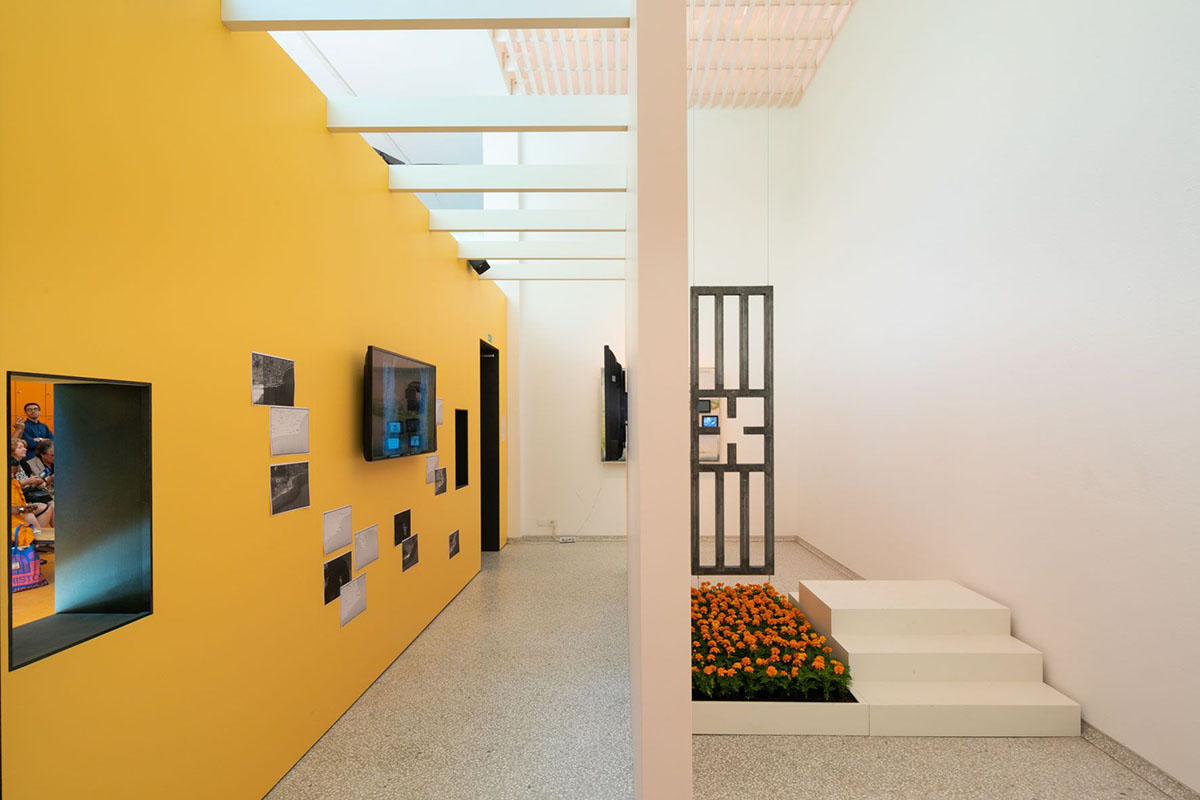
"This collaborative endeavor seeks to foster new forms of creativity and responsibility within the architectural field in response to emerging technologies of automation. A domain of research and innovation that, despite its ongoing transformation of the built environment and bodies that inhabit it, is still largely devoid of a critical spatial perspective," stated in the Pavilion's manifesto.
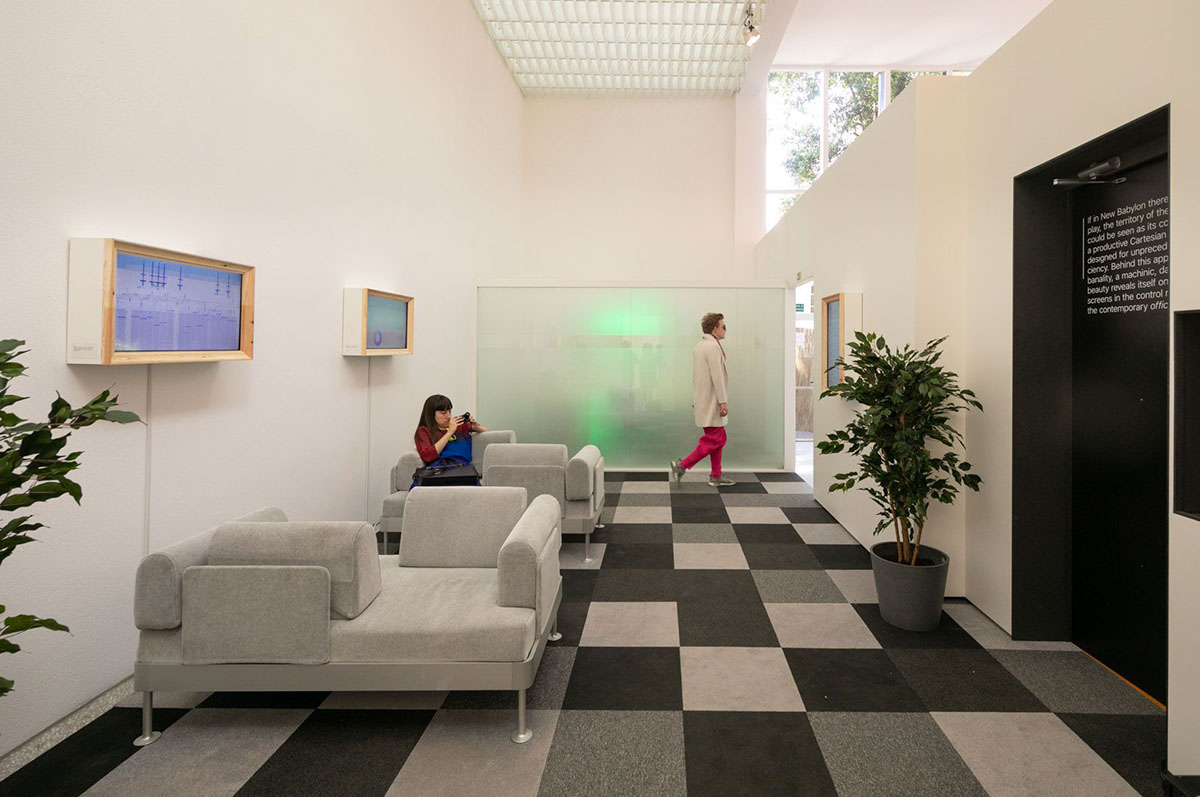
The exhibition space is divided into 12 sections that are explored and interpreted in different ways under different topics. The sections include Locker Room - the Netherlands, a testing ground where the future of labor has been and continues to be reimagined, Bed - Bed-In, by Beatriz Colomina, Door - On Technologies of Certain Bodies, by Amal Alhaag, Factory - Songs for Hard Working People, by Noam Toran with Florentijn Boddendijk and Remco de Jong, Farm - Renderlands: Installation, by Liam Young, Harbor - The Port and the Fall of Icarus, by Hamed Khosravi, Taneha Kuzniecow Bacchin, and Filippo LaFleur.
Office - Automated Landscapes, by Marten Kuijpers and Victor Muñoz Sanz, Patent - The Institute of Patent Infringement, by Jane Chew and Matthew Stewart, Playground - Constant's New Babylon, revisited by Mark Wigley, Simulation - Safety Measures, by Simone C. Niquille, Waiting Room - Shore Leaves, by Giuditta Vendrame, Paolo Patelli and Giulio Squillacciotti and Window - Architecture of Sex Work, in collaboration with Amsterdam Museum and The Foundation for Responsible Robotics.
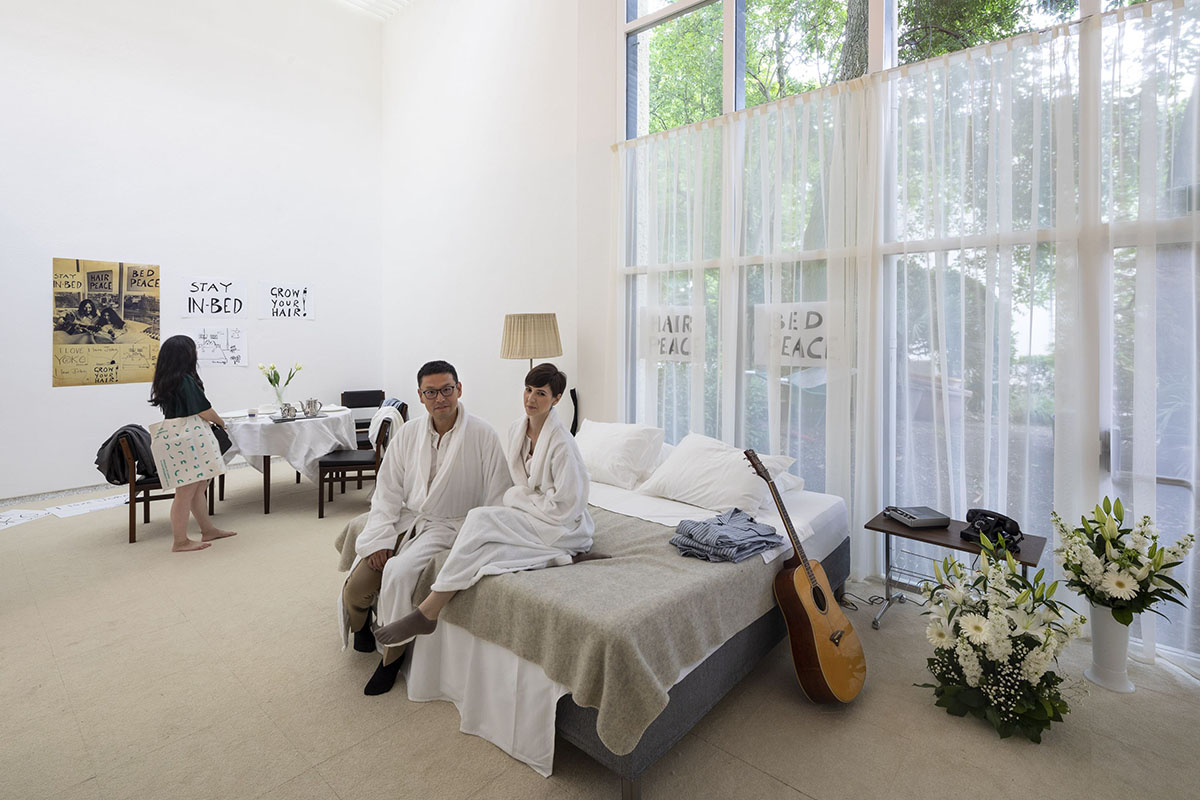
Architecture historian Beatriz Colomina has installed a bed from room 902 of the Amsterdam Hilton Hotel, the site of John and Yoko’s Bed-In for Peace in 1969. Colomina's seminal essay "The 24/7 Bed" essay deeply touches upon the bed's role "as a unique horizontal architecture in the age of social media [and] a contemporary workspace transforming labor."
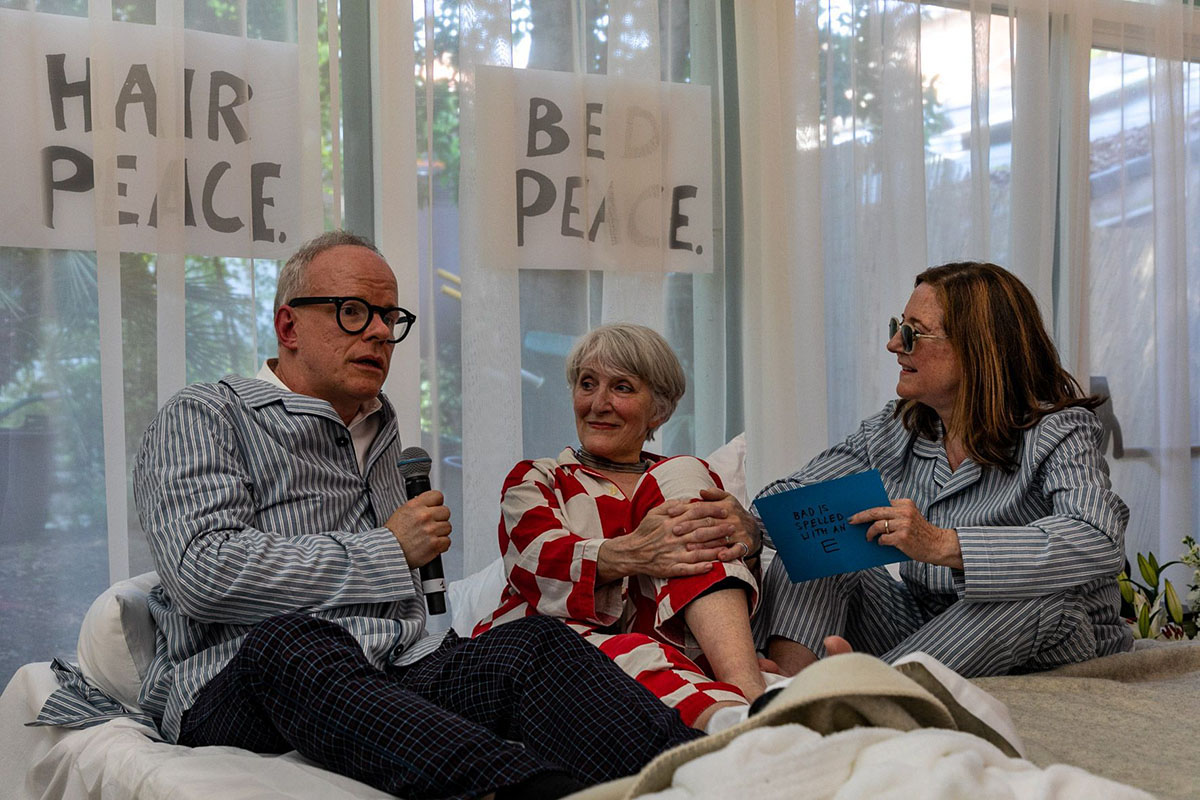
At the opening of the Dutch Pavilion, Betriz Colomina has run marathon interview sessions with Paola Antonelli, Thordis Arrhenius, Felix Burrichter, Odile Decq, Elizabeth Diller, Keller Easterling, James Taylor Foster, Eva Franch, Samia Henni, Nikolaus Hirsch, Francesca Hughes, Andres Jaque, Lesley Lokko, Niklas Maak, Winy Maas, Ivan Lopez Munuera, Alysa Nahmias, Pascal Schwaighofer, Felicity Scott, Madelon Vriesendorp, and Mark Wasiuta with pijamas format.
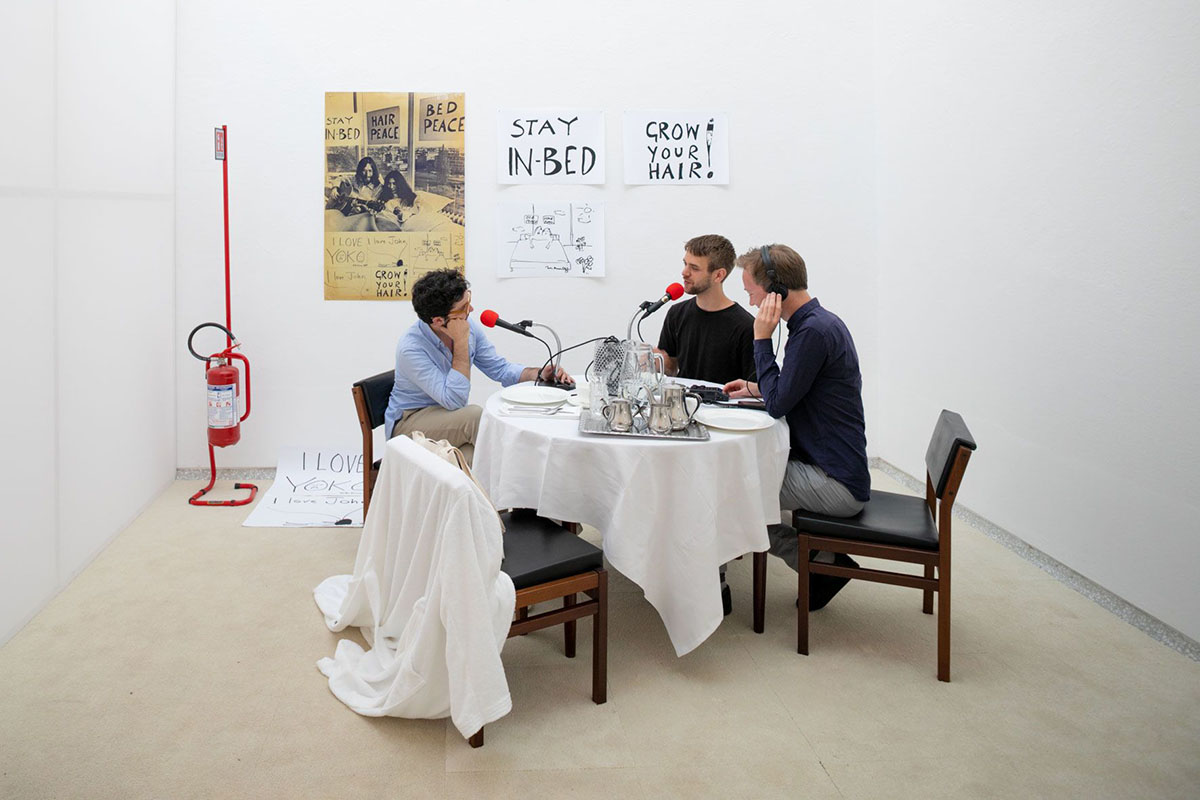
"The Netherlands is, arguably, a testing ground where the future of labor has been and continues to be reimagined. The work of architect and artist Constant Nieuwenhuys has been a particular trigger for this conversation. In Constant’s New Babylon (1956–74)—an architectural paradigm of free space and leisure afforded by automation—society devotes its energy to creativity and play, and individuals can design their own environments," stated in the Pavilion's project description.
"And yet, as Constant’s oeuvre evolved, his optimistic vision on the possibilities and pleasures of automated labor gradually gave way to a more conflicted perspective. Violence would not be eradicated by the new technological order, mobilized to satisfy society’s immediate needs; it would become, rather, an intrinsic part of its processes and aims."
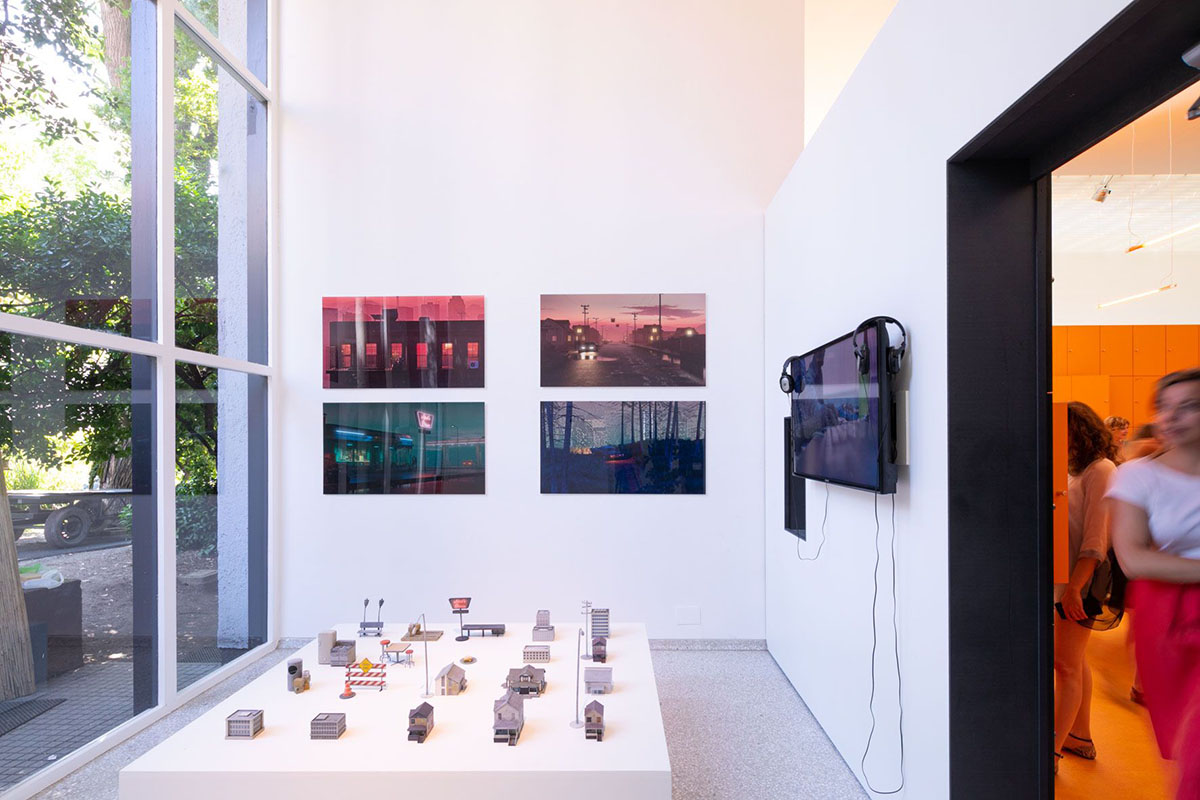
In the Renderlands room, Liam Young has filled the room with a series of models, to show that how Indian factory workers are not considered deeply for the futuristic projects developed by Western architects.
"In line with this collaborative working method, curator Marina Otero Verzier has created a multidisciplinary exhibition for the Dutch Pavilion. This showcases the ambition to not only overcome national boundaries but to operate beyond disciplinary boundaries as well," said Barbera Wolfensberger, the current Director-General of Culture and Media.
All images © Daria Scagliola
